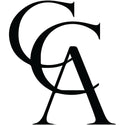1966 Round 50 Cent Coin


The Royal Australian Mint in Canberra was officially opened by Duke of Edinburgh, Price Phillip, on the 22nd of February 1965. This opening preceded the abandonment of the Australian predecimal pounds, shillings and pence (£sd), with the release of our current Australian Dollar the following year in 1966.
Predecimal values were quite difficult to calculate as coin values did not exchange uniformly when paying for goods or services. For example 1 guinea (a British coin produced until 1814) equalled 21 shillings, while 1 sovereign equalled 1 pound, a half sovereign equalled 10 shillings, 1 crown equalled 5 shillings, and 12 pennies equalled 1 shilling. Further complicating these exchange values, Australian predecimal currency also included the florin which equalled 2 shillings, the sixpence equalling 12 pennies, and the threepence equalling 6 half pennies.
Comparatively the metricated system operates on a much less complicated formula where 100 cents equal 1 dollar, and 2 dollars equals 2 dollars or 200 cents. Since withdrawing the 1 and 2 cent coins from circulation in February 1992, very rarely do Australians still use these legal tender coins. With this change people had to become accustomed to rounding up or down to the nearest 5 cents; using 5, 10, 20, and 50 cent coins as the minor currency. Although with the invention and popular use of internet banking employing the same decimal currency system, exact prices are often paid for goods and services.
It is evident change can come quick and fast in the world of currency, and for the case of this pictured round 1966 50 cent piece; it came after just one year of minting (officially ending in March 1968). Because these coins contain 80% (10.62 grams) of pure silver; when the price of silver rose to over $3.50 AUD per ounce by mid-1968, each one of these coins would have cost over 83 cents in silver value alone. One can imagine how high the total production cost would have been to produce millions more in the years to come. As such 1966 was the only date the round 50 cent coin was minted with.
Pressures from an increasing price in silver, as well the coin’s unpopularity due to the similar design of the 20 cent piece, the 50 cent coin was redesigned into the dodecagon shape we have today; first released in 1969. The composition of the coin contains 75% copper and 25% nickel. Reviewing the RAM’s 50 cent circulating webpage we can see that 36’500’000 coins were produced in 1966. It is not exactly known how many of these coins were reclaimed by the government and melted down, or how many left the country for personal enterprise reasons. Although estimates for how many of these coins still exist range from the low to high millions. Today these coins are collectable for their numismatic value, as well as for their silver value.
Release: 1966
Mintage: 36’500’000
RESOURCES
About the Mint – 28/08/2021: The Grand Opening https://www.ramint.gov.au/about-mint
Australian predecimal coin values 28/08/2021: Values, images, and specifications for Australian coins from 1910 to 1964 https://www.allcoinvalues.com/australian-coins-and-notes/australian-predecimal-coin-values.html
RAM Circulating Coins Webpage 28/08/2021: One Cent https://www.ramint.gov.au/one-cent
RAM Circulating Coins Webpage 28/08/2021: Two Cents https://www.ramint.gov.au/two-cents
RAM Circulating Coins Webpage 28/08/2021: Fifty Cents https://www.ramint.gov.au/fifty-cents
YouTube 07/03/2021: The coin that was worth too much (1969) | RetroFocus (ABC News Australia) https://www.youtube.com/watch?v=KJyxoobTCWI
Last Updated: 24/03/2022

Leave a comment